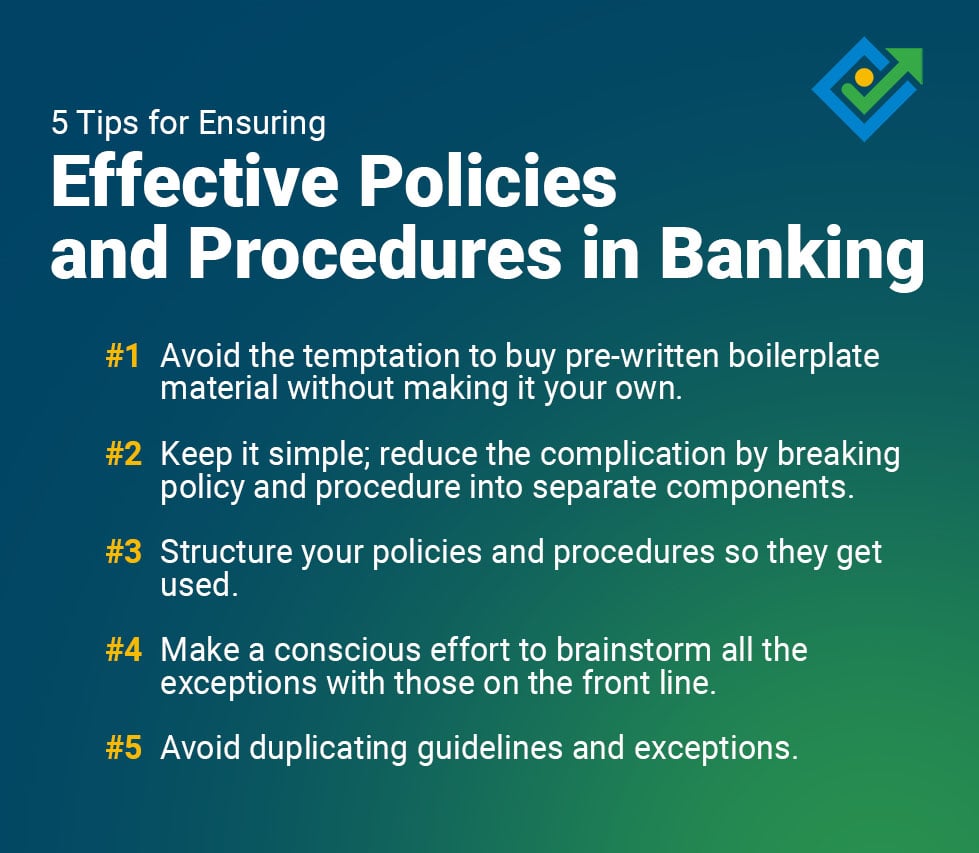
Complexity and heavy regulatory oversight make developing effective policies and procedures in banking a special challenge. Here are five tips for ensuring your bank’s Policies and Procedure system delivers value and will be used.
1. Avoid the temptation to buy pre-written boilerplate material without making it your own. The policies you deliver to employees and board members should reflect your own philosophy, best practices, culture, and exceptions. (If you are tempted to buy pre-written material, at least do a careful review and customize it to your company.)
2. Keep it simple; reduce the complication by breaking policy and procedure into separate components. Having a clear understanding of what a policy is and what a procedure is helps you keep things clean and simple. That is the heart of our Operations Mapping approach. Also see Avoiding Common Pitfalls: Don’t Mix up Policies and Procedure (How-tos)
3. “Structure” your policies and procedures so they get used. The right structure is also essential for maintenance. Breaking information into bite-sized components will help you systematically think through issues, ensure you cover all the bases, and deliver content your employees can understand, learn, and use. (The days of policy and procedure manuals sitting on the shelf should be history!)
4. Make a conscious effort to brainstorm all the exceptions with those on the front line. Put them in a separate list. Customer Identification is a good example. What guidelines will help employees make the right decisions and not fall prey to the “Bubba Syndrome” – Sally knows his brother-in-law, who knows his ex-girlfriend, so he’s OK.
5. Avoid duplicating guidelines and exceptions. Create it once, and link it to the related content. If you write it more than once, you’ll end up with redundant information, and maintenance will soon become a nightmare, and you’ll be caught in a never-ending cycle. It's too difficult to keep everything updated, so your policies and procedures become obsolete, so people won’t trust them, and so they don’t get used.

Additional Resources
.png?width=289&height=63&name=full%20logo%20(white).png)
